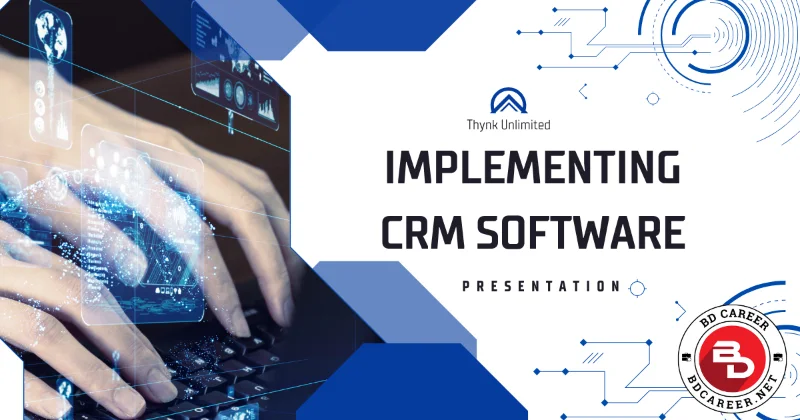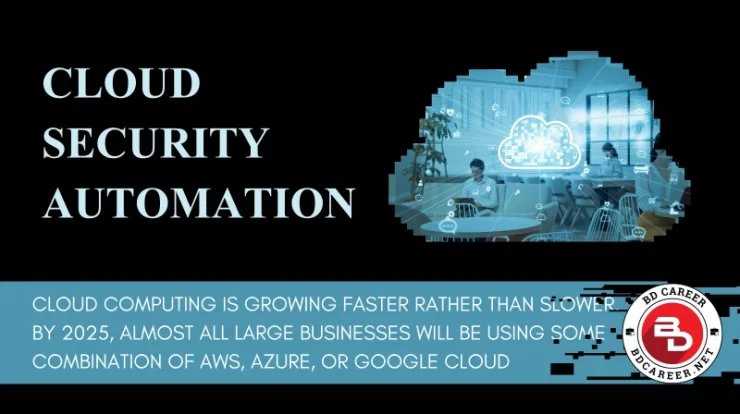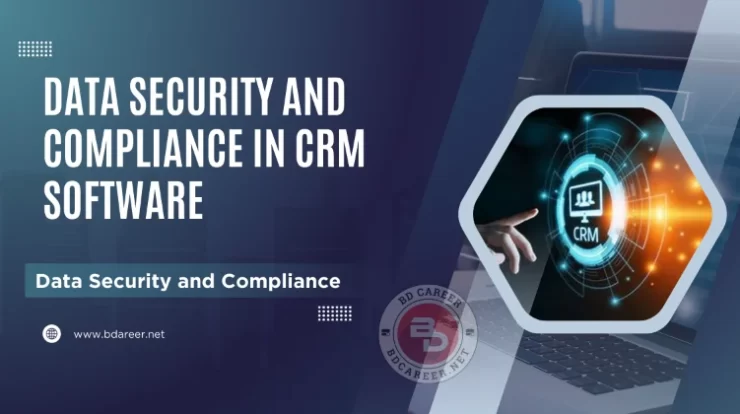
Ever feel like your business could use a personal assistant, someone who remembers everything about your customers, keeps the team organized, and magically boosts sales? That’s what CRM software does, and trust me, it’s a total game-changer.
Did you know that companies effectively implementing CRM software can experience up to a 41% increase in sales productivity? Customer Relationship Management (CRM) software has become an essential tool for modern businesses, enabling them to enhance customer relationships, streamline processes, and achieve higher profitability. In today’s competitive landscape, adopting CRM software is no longer optional but a strategic necessity.
This article will delve into the importance of CRM implementation, outline best practices for a successful rollout, and highlight common pitfalls to avoid. Whether you’re a small business owner or part of a large corporation, these insights will equip you with the tools to ensure your CRM implementation journey is smooth and successful.
Contents
- Understanding the Importance of CRM Implementation
- Pre-implementation planning for CRM
- Key Steps in CRM Software Implementation
- Best Practices for Maximizing CRM Efficiency
- Common Challenges and How to Overcome Them for CRM
- Measuring Success and Continuous Improvement for CRM
- Conclusion
- Frequently Asked Questions
- What is the first step in successfully implementing CRM software?
- How do you ensure user adoption of the CRM software?
- What are common pitfalls to avoid during CRM implementation?
- How do you measure the success of a CRM implementation?
- What are some best practices for maintaining a CRM system post-implementation?
Understanding the Importance of CRM Implementation
Why CRM Software is a Game Changer for Businesses
CRM software transforms how businesses interact with customers by centralizing customer data, streamlining workflows, and fostering deeper relationships. Companies leveraging CRM solutions see remarkable improvements in productivity, with statistics showing revenue increases of up to 41% per sales representative.
Beyond boosting sales, CRM software offers a competitive advantage by enhancing customer satisfaction and loyalty. By delivering personalized experiences and timely follow-ups, businesses can differentiate themselves in saturated markets. Effective implementation ensures these benefits are fully realized, positioning organizations for long-term growth and success.

Pre-implementation planning for CRM
Setting the Stage for CRM Success
Proper planning is critical to successful CRM implementation. Start by assessing your organization’s unique needs and objectives. Are you aiming to improve customer retention, optimize sales processes, or enhance marketing campaigns? Clearly defining these goals will guide your platform selection and implementation strategy.
Choosing the right CRM platform is equally important. Evaluate options based on scalability, ease of use, and key features like automation, analytics, and integration capabilities. Popular platforms such as Salesforce, HubSpot, and Zoho CRM cater to diverse business needs and sizes. According to recent market research, cloud-based CRM solutions dominate the industry, offering flexibility and cost-effectiveness.
Before you dive headfirst into the world of CRMs, take a deep breath. Planning is everything here. Let me share a golden rule: a CRM is only as good as the effort you put into it upfront.
First things first, figure out your business goals. Are you focused on improving customer retention? Boosting sales? Once you’ve got that clear, choosing the right platform becomes easier. A tip? Start with scalable platforms like Zoho CRM if you’re small or consider Salesforce for a more robust solution.
Here’s a quick comparison table to help:
Feature | Zoho CRM | Salesforce CRM |
Scalability | Ideal for SMBs | Perfect for large enterprises |
Usability | Easy to set up | More complex but powerful |
Pricing | Budget-friendly | Premium pricing |
Develop a clear implementation roadmap with defined timelines and milestones. This ensures the project stays on track and aligns with your business goals. Communicate this plan across teams to foster alignment and enthusiasm.

Key Steps in CRM Software Implementation
Step-by-Step Guide to Implementing CRM Software
- Data Migration and Cleanup: Before migrating data to the new CRM, audit your existing records. Remove duplicates, update outdated information, and standardize formats to ensure data accuracy. Clean data is the foundation of a successful CRM system.
- System Integration: Seamless integration with existing tools like ERP systems, marketing automation platforms, and email services is essential. Integration minimizes manual tasks and creates a unified ecosystem for business operations.
- Customizing the CRM: Align the CRM’s features with your specific business needs. Customize dashboards, workflows, and reports to reflect your unique processes. Tailored solutions improve user adoption and maximize efficiency.
- Training Employees: Provide comprehensive training to ensure employees feel confident using the CRM. Conduct workshops, create user manuals, and offer ongoing support to address queries and concerns. Gamify the learning process to encourage engagement.
- Minimizing Disruption: Roll out the CRM in phases rather than all at once. Begin with pilot teams, gather feedback, and refine processes before company-wide implementation. This approach minimizes disruptions and enhances user satisfaction.
Best Practices for Maximizing CRM Efficiency
Ensuring Long-Term CRM Success
- Continuous Training and Support: Even after the initial rollout, provide ongoing training to ensure employees stay updated on new features and best practices. A well-informed team maximizes the CRM’s potential.
- Regular Updates and Optimization: Periodically review the CRM system’s performance. Update workflows, add new functionalities, and remove redundant features to keep the platform aligned with evolving business needs.
- Leveraging Automation: Automate repetitive tasks like email follow-ups, lead scoring, and reporting. Automation not only saves time but also enhances accuracy and consistency.
- Analyzing CRM Data: Use the CRM’s analytics capabilities to identify trends, track customer behaviour, and measure campaign success. Data-driven insights enable informed decision-making and strategic growth.
Case studies of companies like Amazon and Apple highlight how robust CRM systems have fueled customer-centric innovation and unparalleled efficiency.
Common Challenges and How to Overcome Them for CRM
Avoiding Pitfalls During CRM Implementation
- Resistance to Change: People naturally resist new systems. To tackle this, involve employees early on. Highlight the “what’s in it for me” factor like less manual work and better tools to hit their goals.
- Overcomplicating Setup: It’s tempting to use all the features your CRM offers, but less is more. Focus on the tools you need. Fancy dashboards are great, but only if they help you work smarter.
- Security Concerns: CRMs store sensitive customer data, making security a top priority. Ensure your platform complies with industry standards like GDPR or HIPAA. A secure CRM builds trust with customers, and that’s priceless.
- Integration Hiccups: Not all tools play nice together. Before choosing a CRM, check for compatibility with your existing systems. If you hit a snag, reach out to vendor support they’re there to help.
Proactive communication and a user-centric approach can help businesses navigate these challenges effectively.

Measuring Success and Continuous Improvement for CRM
You’ve implemented your CRM and tackled challenges amazingly! But how do you know it’s working? Measuring success isn’t just about gut feelings; it’s about hard numbers.
Here’s what to track:
- Customer Satisfaction (CSAT): Happy customers are loyal customers. Use surveys or feedback tools to measure their satisfaction.
- Sales Growth: Compare sales data pre- and post-CRM implementation. Are your reps closing more deals?
- User Adoption Rates: A CRM only works if people use it. Track how often employees log in, complete tasks, or update data.
Encourage regular feedback from users to fine-tune your system. For instance, if sales teams find certain features cumbersome, explore customizations to make their lives easier.
And don’t forget: business needs to evolve. Revisit your CRM strategy every six months to ensure it aligns with your goals. This continuous improvement approach keeps your CRM and your business ahead of the game.
Conclusion
CRM software implementation is a transformative process that can drive significant growth and efficiency for businesses. By prioritizing thoughtful planning, seamless execution, and continuous optimization, organizations can unlock the full potential of their CRM systems.
If you’re ready to embark on this journey, consider starting with a CRM trial or consulting experts for tailored guidance. Remember, the key to CRM success lies in aligning technology with people and processes. Take the first step today and set your business on the path to seamless success.
Frequently Asked Questions
What is the first step in successfully implementing CRM software?
Answer:
The first step is to define clear goals and objectives for the CRM implementation. This includes identifying the business challenges you aim to address, such as improving customer satisfaction, streamlining sales processes, or enhancing data analytics capabilities. A well-defined strategy ensures alignment with your business needs.
How do you ensure user adoption of the CRM software?
Answer:
To ensure user adoption:
Involve end-users in the selection process to align the software with their needs.
Provide comprehensive training tailored to different user roles.
Encourage ongoing feedback and make iterative improvements to address user concerns.
Appoint CRM champions within teams to promote usage and share best practices.
What are common pitfalls to avoid during CRM implementation?
Answer:
Common pitfalls include:
Lack of clear objectives or planning.
Insufficient training and support for users.
Over-customization of the software leads to complexity.
Ignoring data quality issues, such as duplicate or incomplete records.
Underestimating the need for change management.
How do you measure the success of a CRM implementation?
Answer:
Success can be measured through key performance indicators (KPIs) such as:
Increase in sales revenue or conversion rates.
Reduction in customer churn.
Improved customer satisfaction scores (CSAT).
Enhanced team productivity and efficiency.
User adoption rates and frequency of CRM use.
What are some best practices for maintaining a CRM system post-implementation?
Answer:
Best practices include:
Regularly updating the system to incorporate new features and security patches.
Conducting periodic audits of data quality and system usage.
Providing ongoing training for employees as roles or software features evolve.
Gathering user feedback to address challenges and optimize the system.
Aligning the CRM strategy with evolving business goals.





